Hands up if you have a photo of your dog asleep on the sofa? Or begging for a treat? Or running after the ball?
Whilst these pictures are super adorable, you’ll find a version of them in everyone’s doggie photo album. So if you want to take photos which are that little bit different, then get creative with these inspirational ideas for doggie photos with a twist.
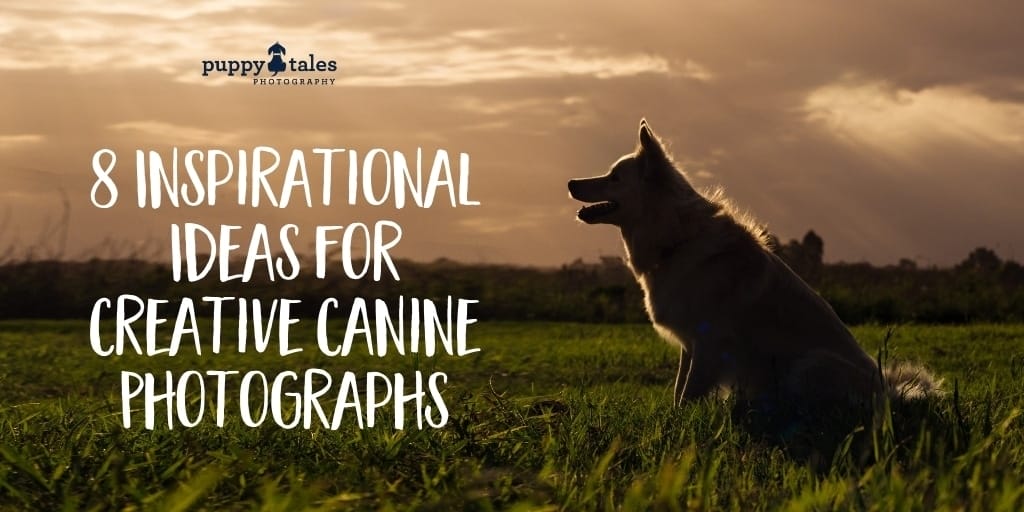
#1: Unique Perspective
Taking a fresh perspective on things is eye-opening. It captures your eye. It can make you stop and think. It can make you giggle. Capturing a photo of your well-known doggie subject, but from an angle its not normally viewed, and you make people look again.
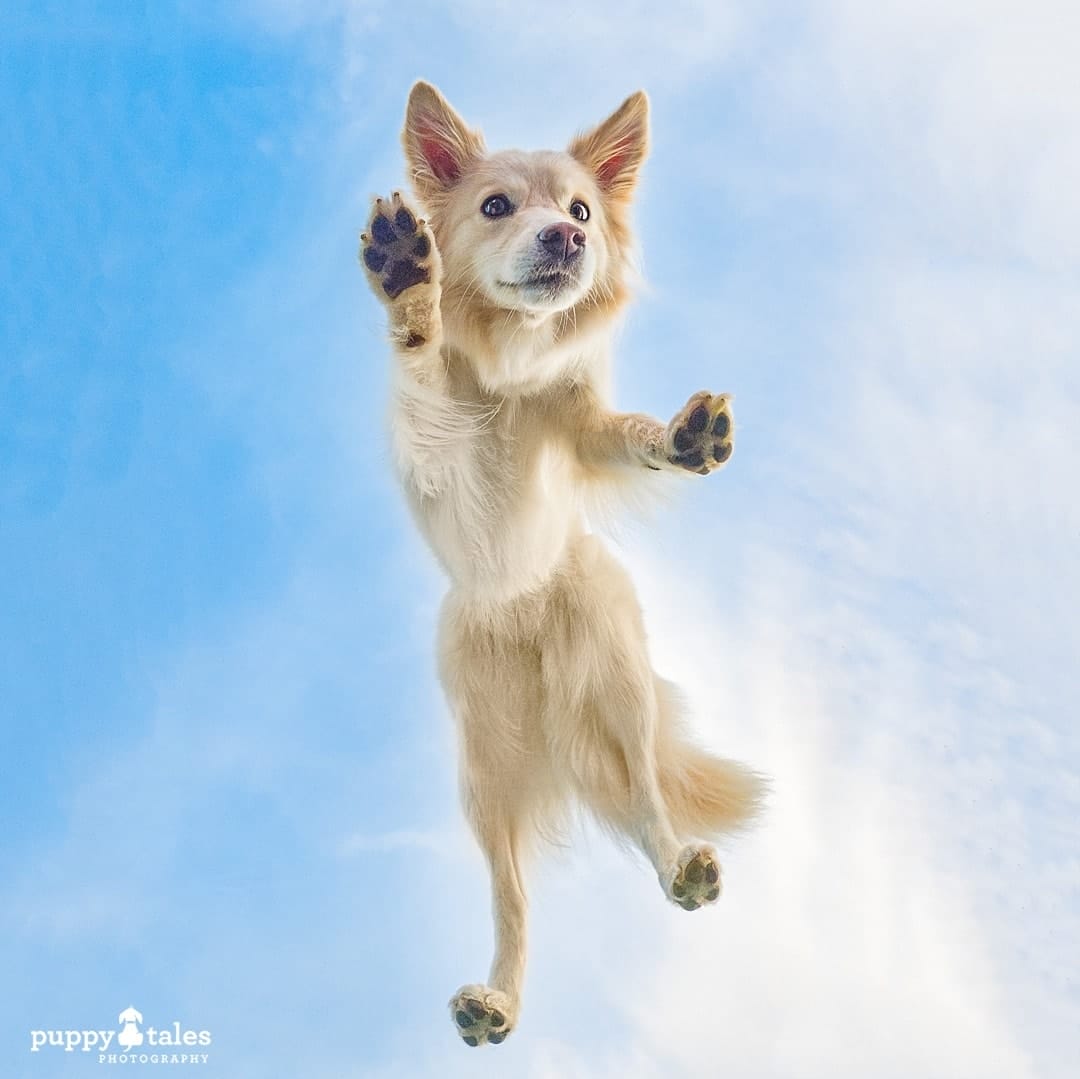
Taking Photos from a Unique Perspective
There are lots of ways to inject an unexpected angle into your canine compositions. These are some of my favourites:
- A dog’s eye view: Get down on the and see the world how your dog sees it.
- Candid camera: Mount a camera onto your dog and let them ‘compose’ the photo as they explore or play
- Lying low: Get underneath the dog (such as lying on your back with a sheet of perspex above for the dog to walk on.)
- The height advantage: Get right above the dog for a bird’s eye view. Use steps, a step ladder, or even a drone to get the height advantage. Look at the shadows – often there can be fun element in them too.
- False perspective: You know that old trick where your fingers in the foreground hold the Eiffel Tower in the background? Try creating your very own “Digby: the world’s largest dog” by placing them in the extreme foreground and an object for size reference in the background.
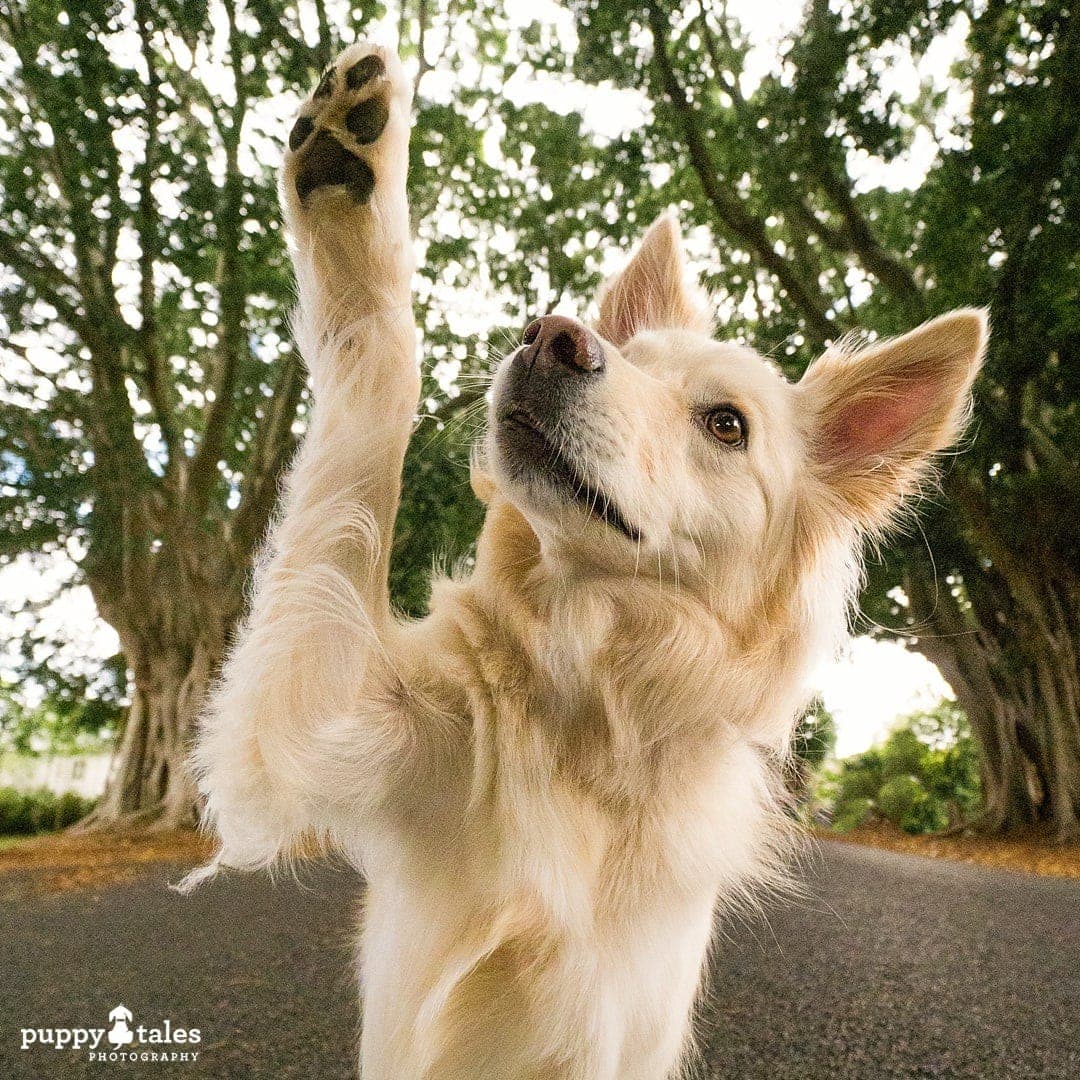
#2: Silhouette
Slash, from Guns N Roses, said: “To be truly iconic you need to be recognizable in silhouette.” Well, he wasn’t talking about dog photography, but you get the idea…. a great photographic silhouette makes for an impactful image.
The pictures have a bright background and no light falling on the foreground subject, throwing them into deep shadow or silhouette. For a classic example, think of a wolf howling against a full moon.
Because the dog will have no discernible detail, key to an iconic photograph is using the dog’s pose to convey a sense of action or emotion.
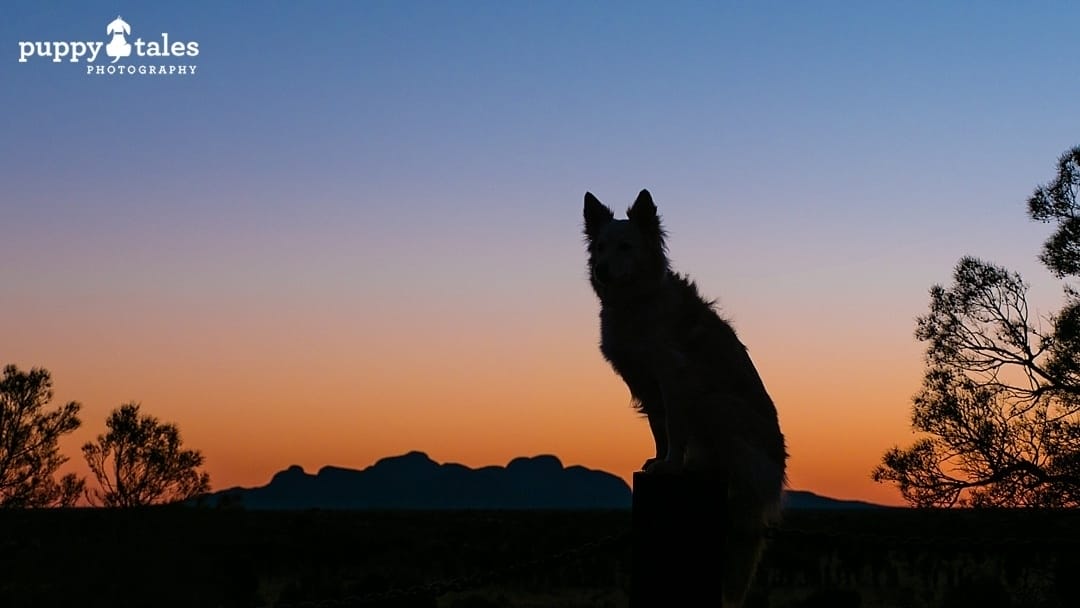
Taking Silhouette Photographs
Position the subject in the foreground, against a bright background such as the sun, moon, skyline, window, or screen. Use a wide aperture and get down on a low level and point the camera upwards.
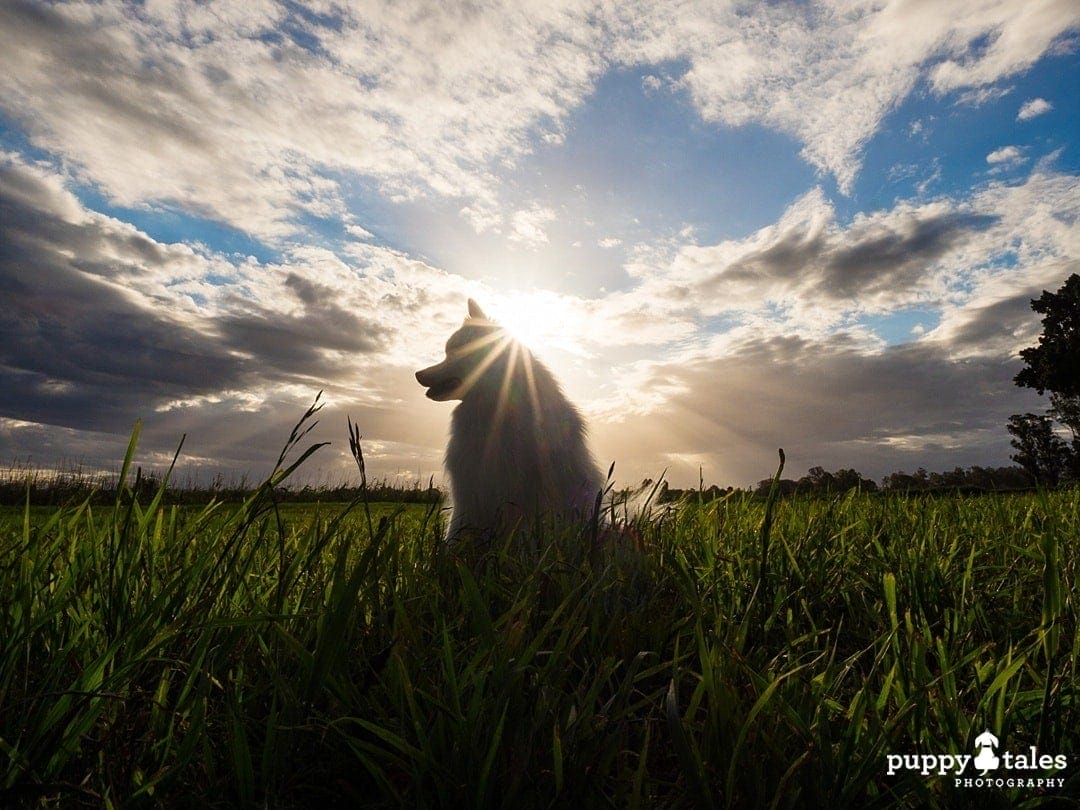
#3: Above and Below the Surface of Water
As the name suggests this involves getting in the water with your dog and half-submerging your camera. Of course this requires a waterproof camera. These create some wonderfully unique photos that convey a sense of the fun experienced from your dog’s point of view.
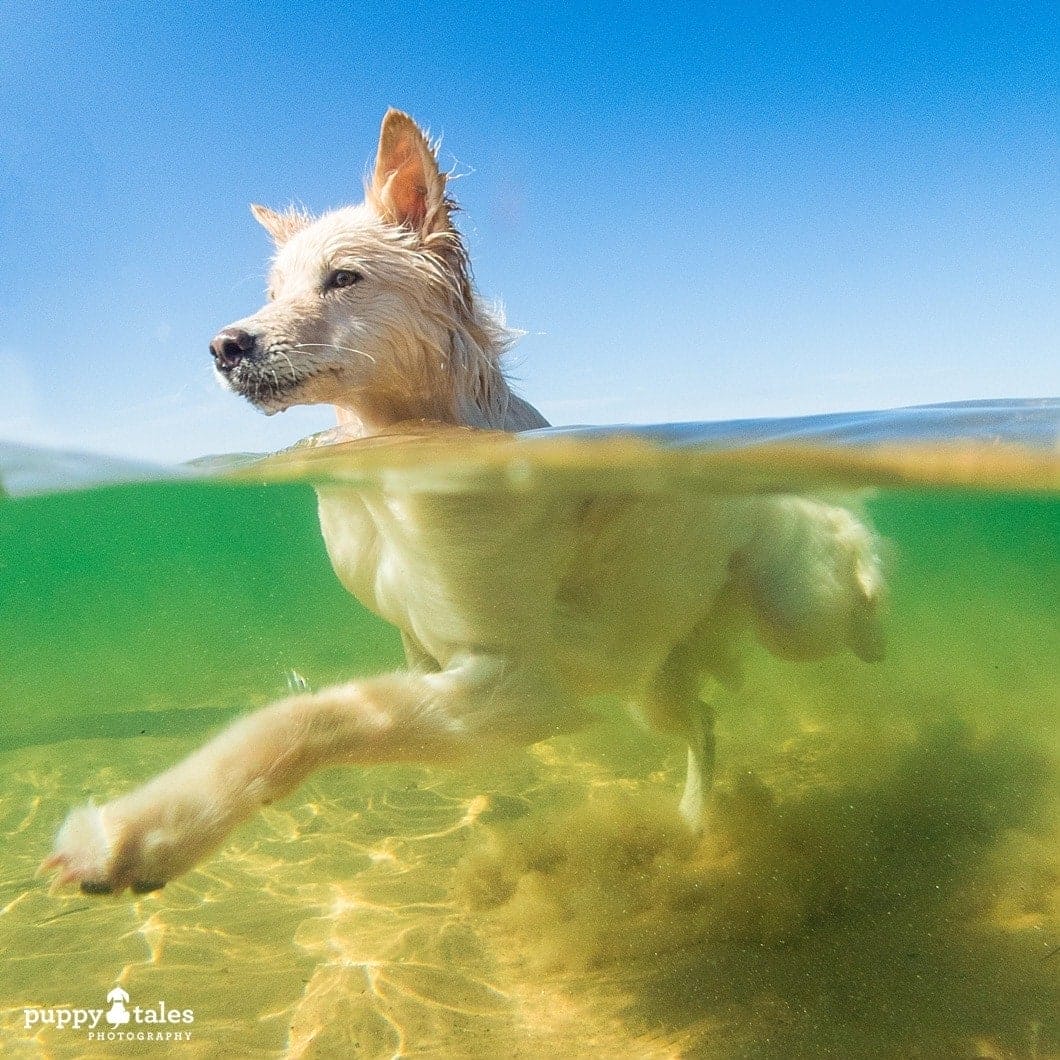
There will be natural distortion that occurs with these style of photos – it’s the result of diffraction as the light travels through water, which will bring the dog’s legs closer to you than his body.
Taking Above & Below Photos
This requires a bit of planning and good sunshine or lighting. You’ll need a bright day, since the sun needs to be strong enough to light beneath the water, not just above. Ideally, chose flat calm water so the waterline doesn’t keep moving. Also, choose water depth that you can kneel in, to better steady the camera, but where your dog is swimming so they aren’t kicking up sand or muck to make the water murky.
You’ll need to make sure your dog is close to the camera or he’ll appear as a dot way off into the distance. Then use a wide aperture and continuous shooting mode, which will help increase the chances of capturing a ‘keeper’.
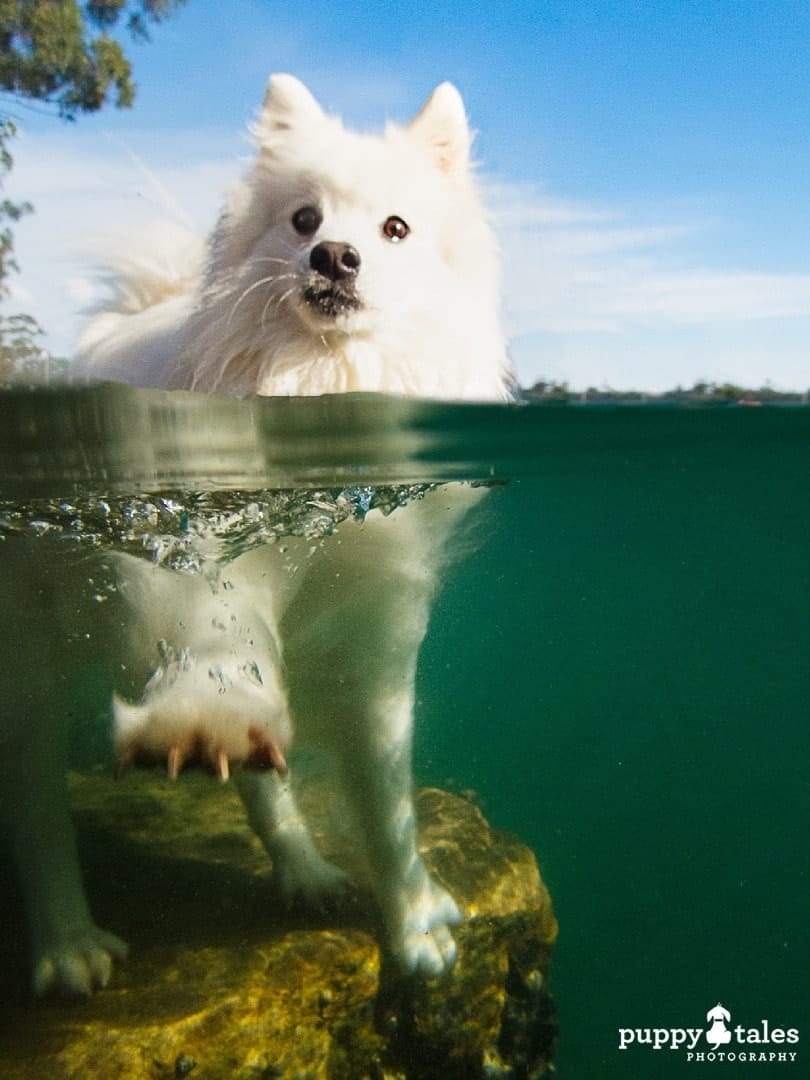
#4: Multiple Exposures
Also called a double exposure, this is where you merging the exposures of two photographs into one. Think of this as a photo overlay, which adds new details or interest to the first photo. So for example, your dog against a light coloured wall and a photo of a tree in front of a blown out sky. When overlaid elements of the tree will be seen in the dog. A silhouette can work well for the photo of your dog which lights or texture are then overlaid. For the second photo look for interesting edges that are going to appear, textures that will add depth.
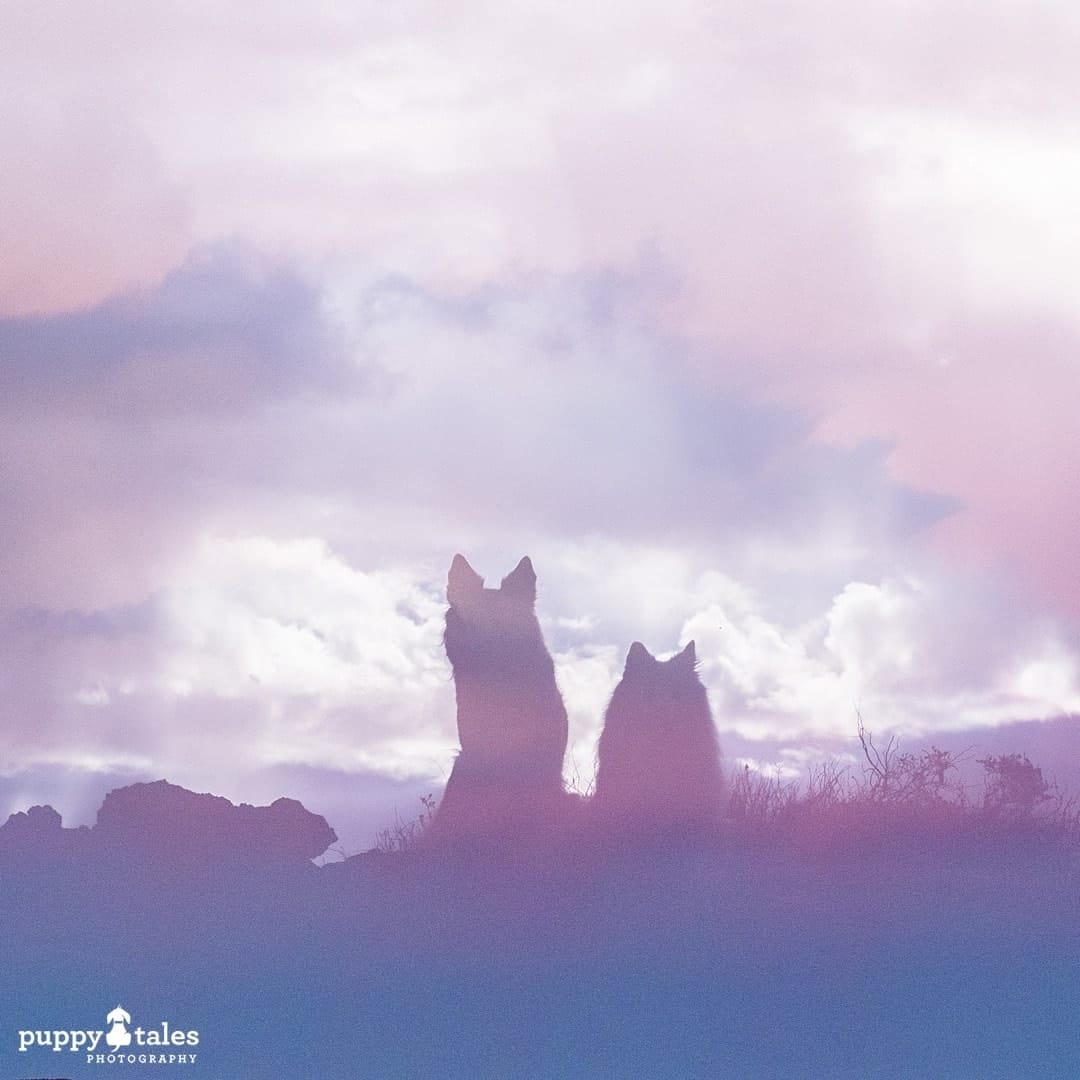
Taking Multiple Exposure Photos
My top tip is to use two photographs where the background is of similar brightness. This makes merging the two photographs relatively simple.
You can do this when processing the photographs after the session. Alternatively, many digital cameras have a multiple exposure function in camera – with these you can do the compose and capture directly in camera! You can use two photographs you already have or one storage photo and superimpose this on the viewfinder, so you see exactly how the finished picture looks. This is great for fine-tuning where the image sits and create stunning photographs.
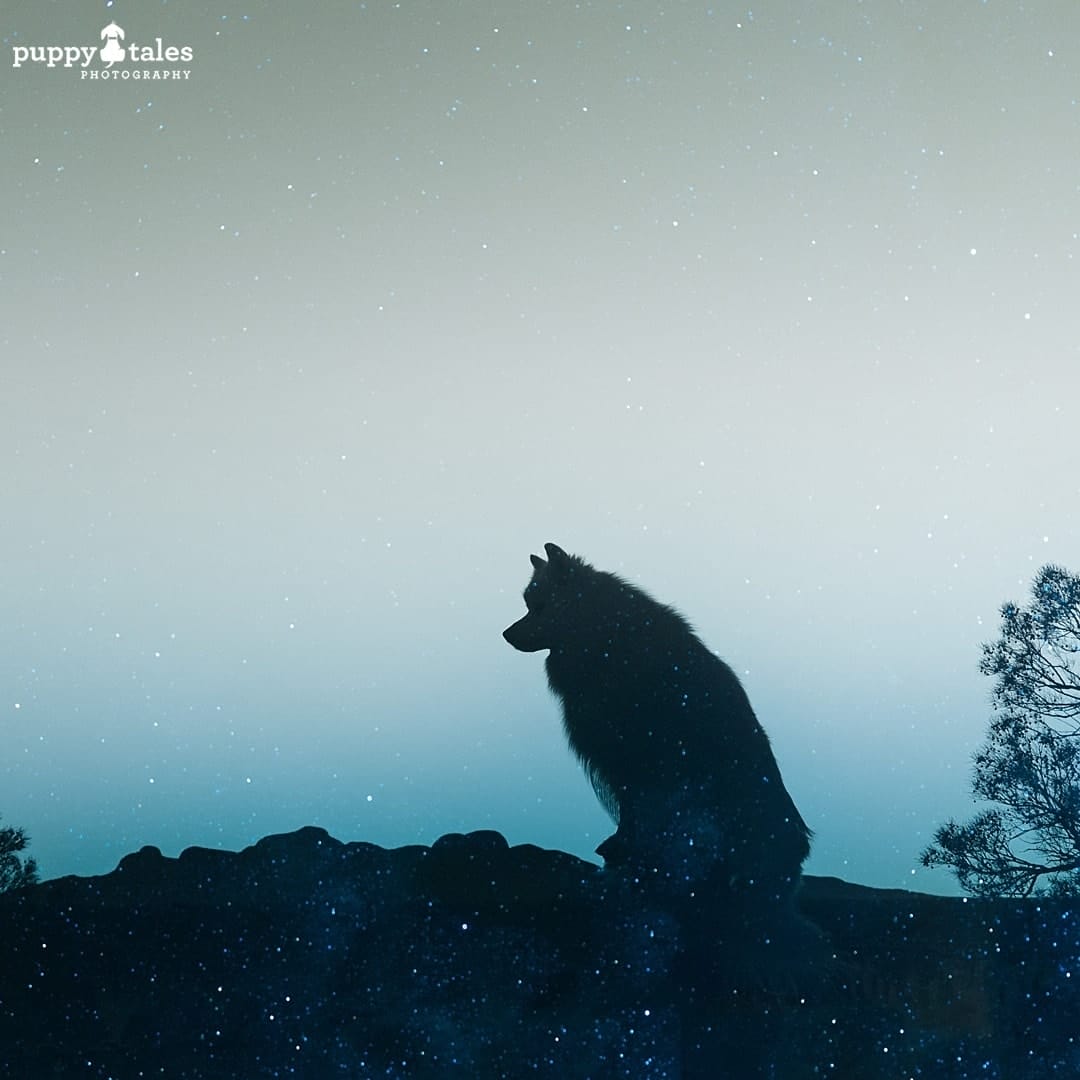
#5: High Dynamic Range (HDR)
This is a variation on multiple exposure photography, which photographs the same scene but with a range of exposures. For example, you capture the same scene but in dim, moderate, and bright light.
The HDR technique goes some way to replicating how the human eye sees a scene (something which the dynamic range of cameras are not able to do) by combining the pictures to add the full range from bright to dark areas.
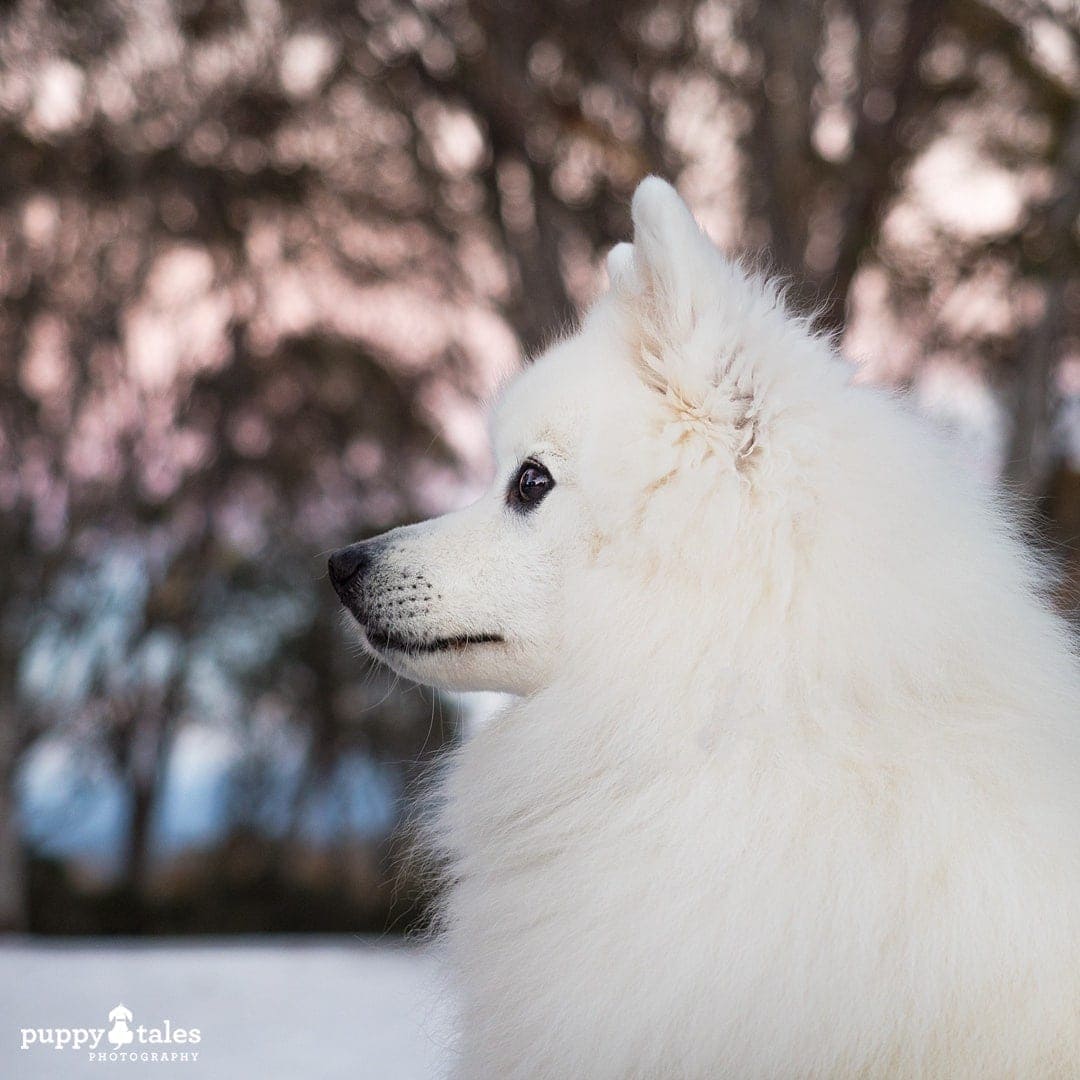
Taking HDR Photos
For lots of detail, a great resource on HDR photography you want to check out is Stuck in Customs. HDR effects can be created during post-processing or in cameras where they have this functionality.
No matter how advanced your camera, you’ll need to keep it on a tripod or have rock-solid steady grip so that that your photos correctly align. It will also be particularly helpful to train the dog to sit or drop and remain quite still.
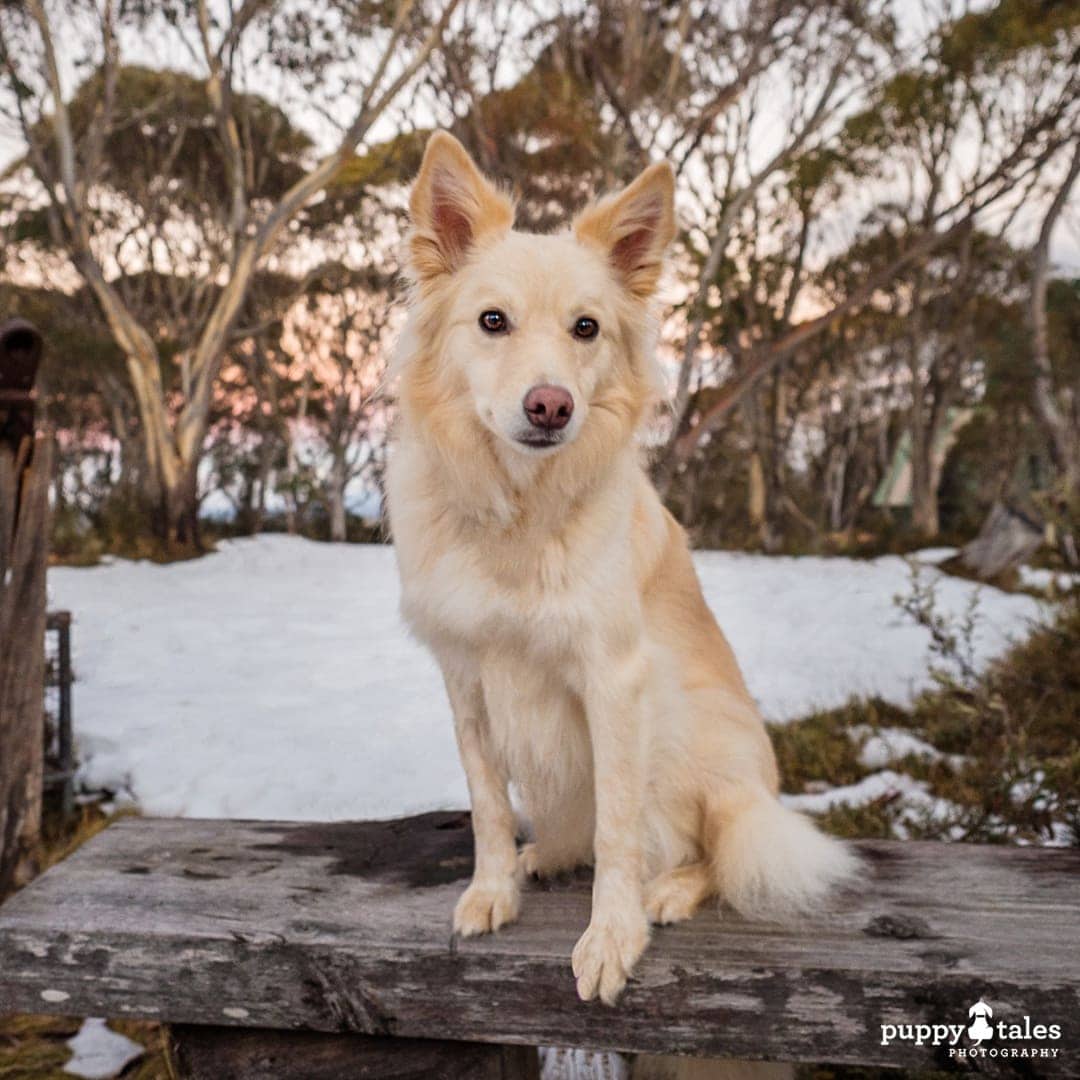
#6: By Firelight
What’s not to love about a dog curled up in front of a fire!
We don’t have a fireplace at home, so I’m always excited when we visit somewhere with a fireplace and always insist on lighting it up. The latter is a feast for the senses with the comforting smell of burning wood, the crackle of flames, and of course the warm, darting light.
Fire has a warm colour balance, predominantly orange and red, and it makes a lovely way to frame your dog or light their face. The results are subtle and beautiful.
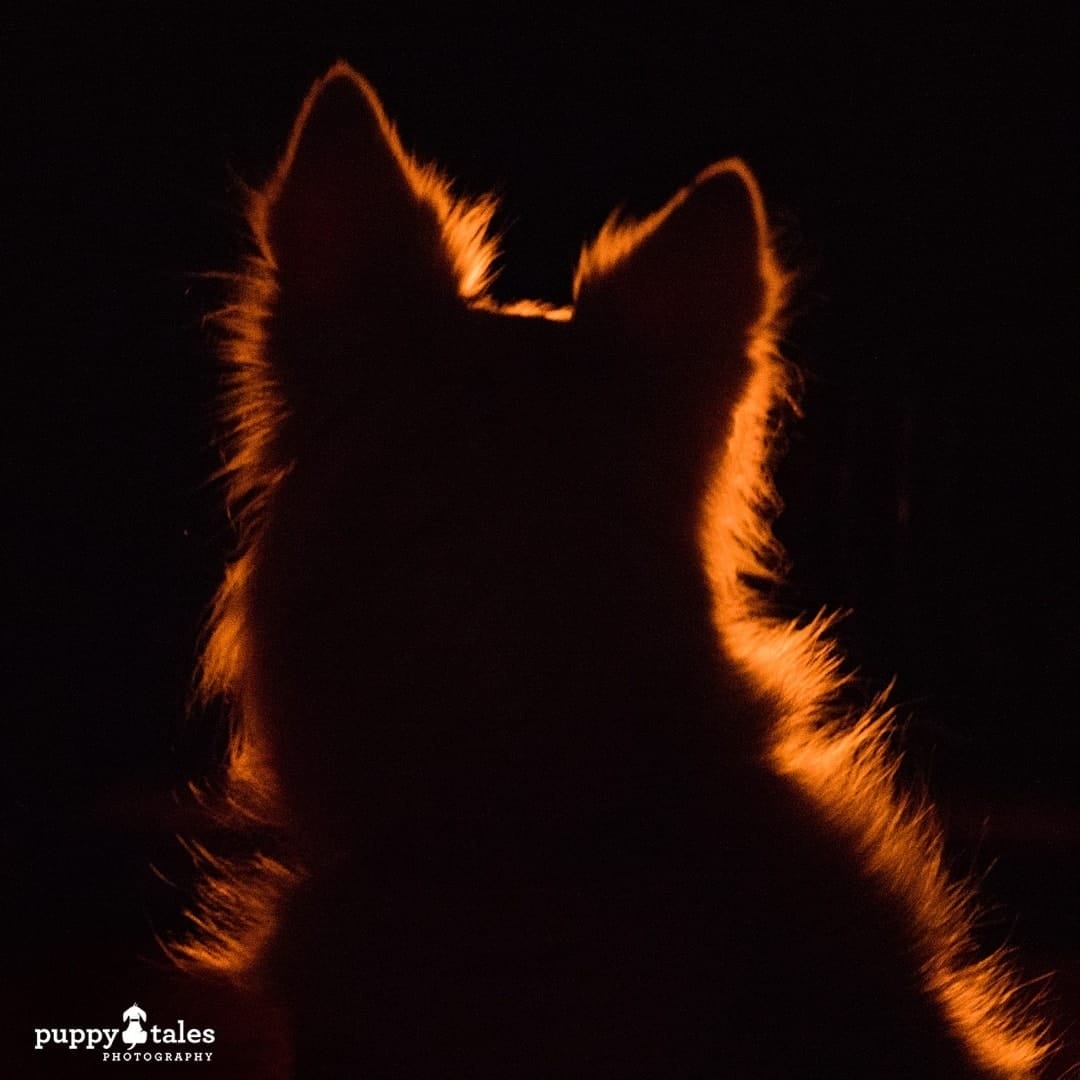
Taking Photos by Firelight
Generally, the light levels are low around a fire. Avoid using flash, as this destroys the subtlety of the lighting. Instead, go for a shallow depth of field and a high ISO.
#7: Reflections
Reflections add interest and a new perspective to a photograph. They can make your stop and look again, and have a private, almost wistful quality about them. Indeed, reflections are all around should you choose to look, such as:
- Rivers, lakes and other waterways
- Puddles
- In buildings
- Windows and mirrors
- Reflective street art
- Car doors
- In water droplets
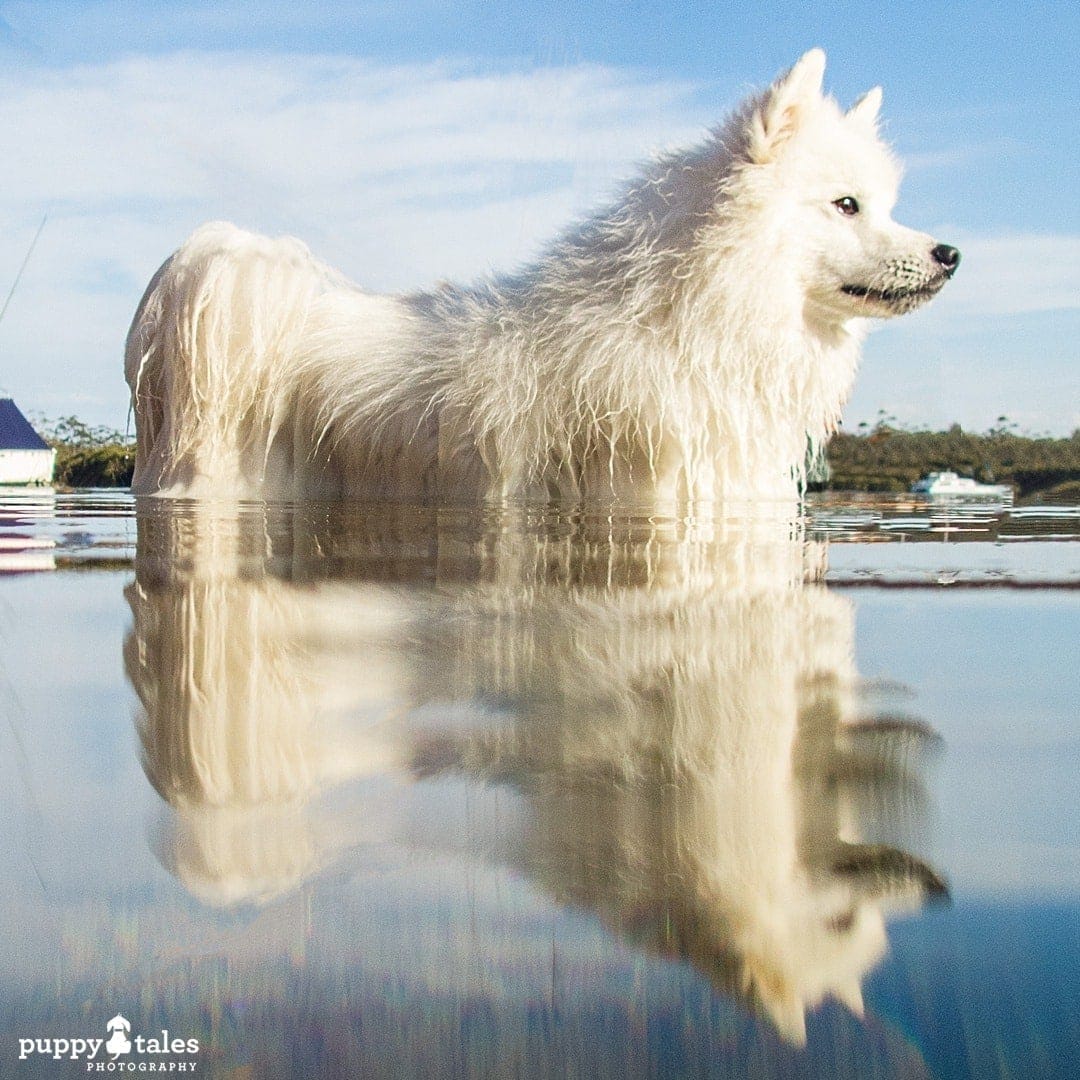
Tips on Taking Photographs of Reflections
Look for calm or still water that has a glassy appearance, to give a crisp reflection. You can always dip a stick in the water and add ripples, should more impact be needed, as the distortion will certainly add interest.
If you’re feeling especially creative then look at how to incorporate a reflection around your subject. For example, you can get really interesting results by mixing a subject photographed through glass with the reflection of what’s behind it seen on the glass.
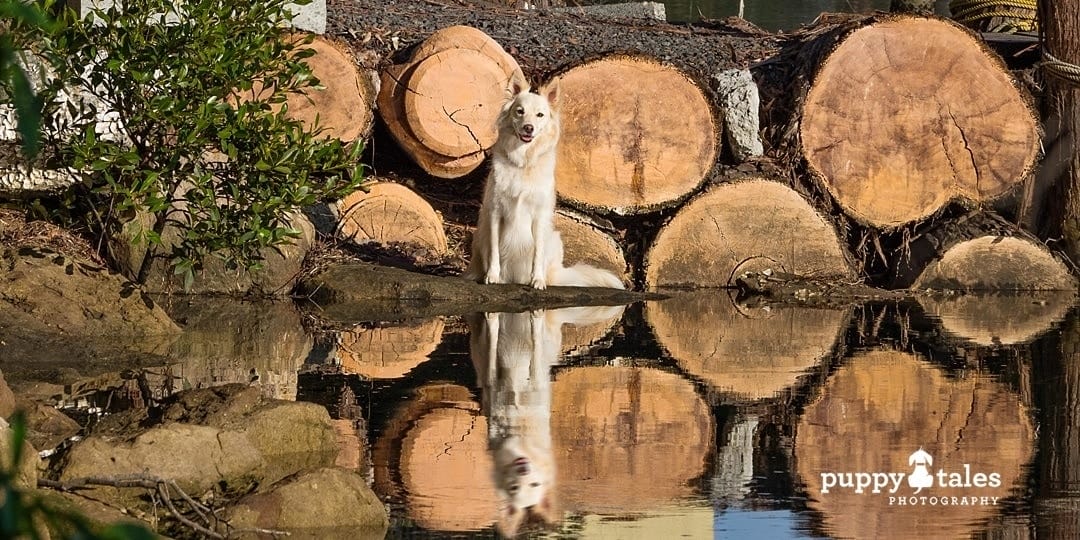
#8: Night Sky
Photographing a dog against the night is more challenging but well worth the effort. If you have a wonderful starry backdrop then you can either position the dog in silhouette against the stars or use a light-source to fill in the foreground detail.
You need some equipment for this one, such as a tripod, and a dog that’s content to stay quite still since low light levels mean a longer exposure.
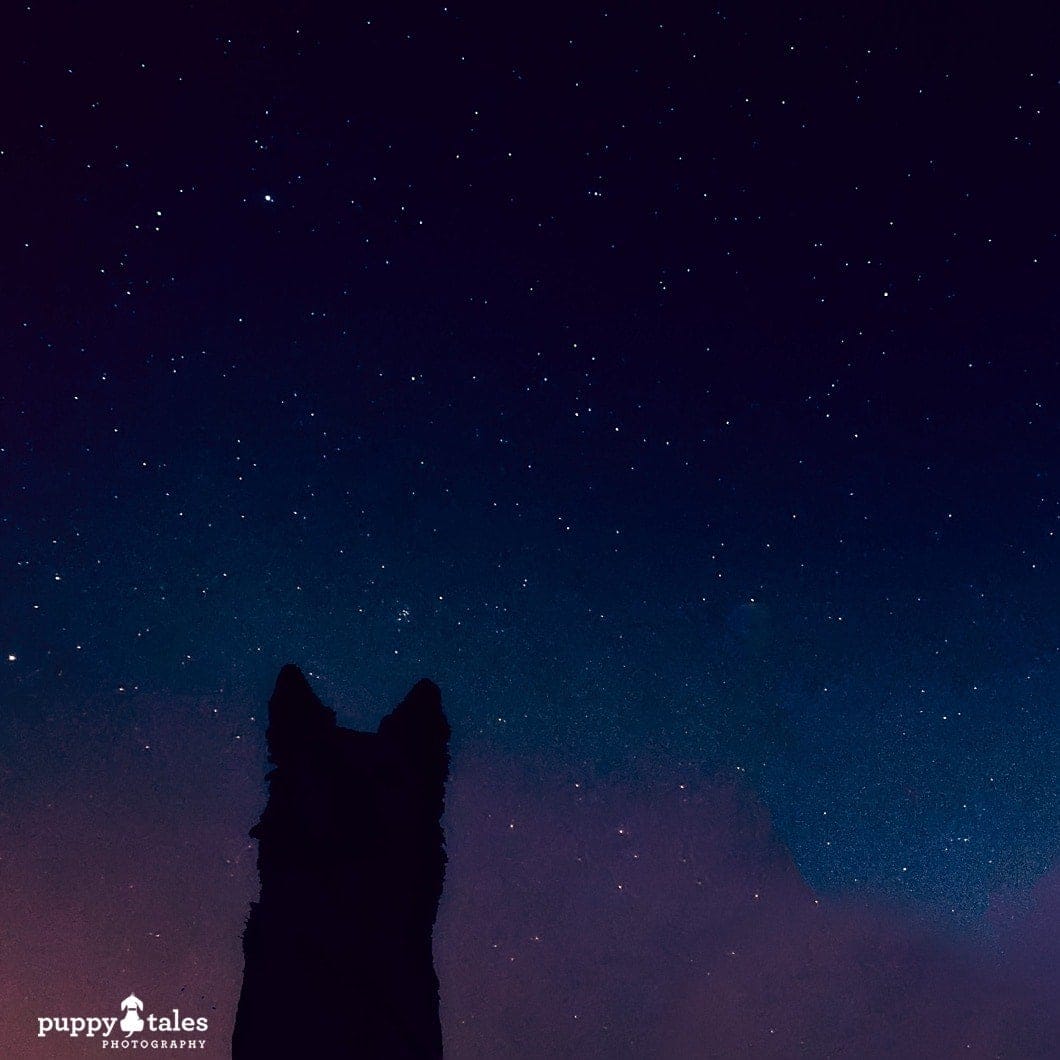
Tips for Photographing the Night Sky
When capturing the dog in silhouette against pinpoint stars, go for as long an exposure as you think your dog will be still for! Use as wide an f/stop as the lens allows, and lock your focus so the camera doesn’t ‘hunt’ and take a blurry picture. Increasing the ISO so that you can achieve a good exposure.
You can also experiment with painting with light, which really means shining a torch (or other light source) on the dog to provide fill-in lighting. Or, take multiple exposures and merge them as an HDR!
Also, spare a thought for safety, so take a torch so you can move around in the dark without tripping over. Plus you may wish to visit the country, so as to escape light pollution in the city.
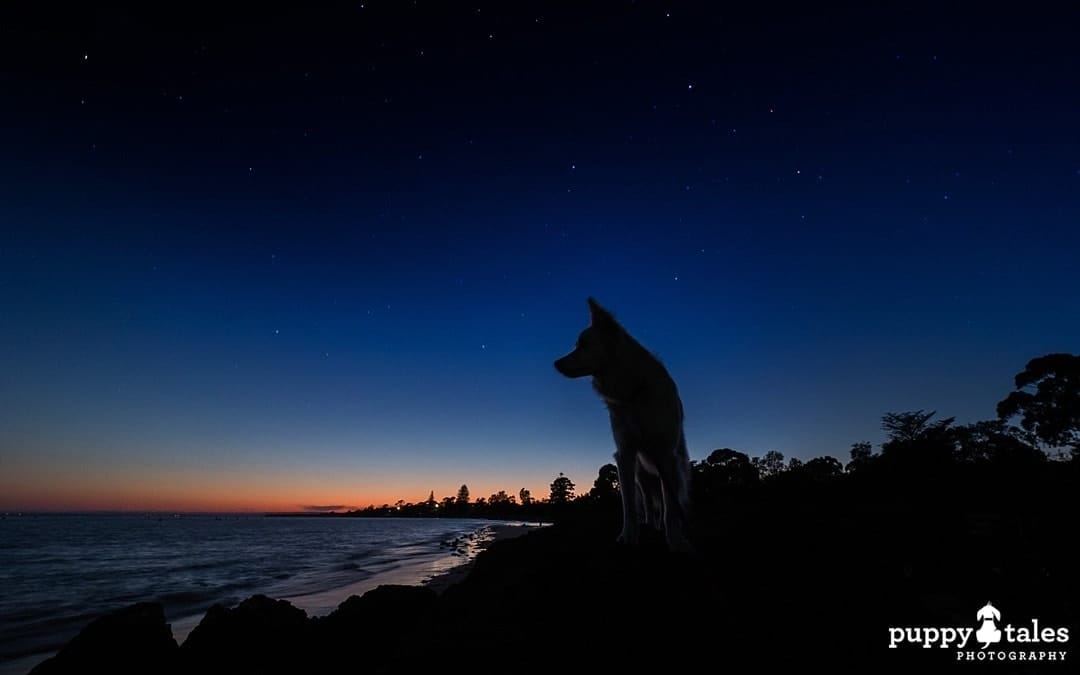
Get out there with your best buddy and camera! Get creative with your canine and showcase their quirky character with photographs that go beyond sofa surfing or playing ball. Get creative with pictures that people will remember because they are different and innovative.


